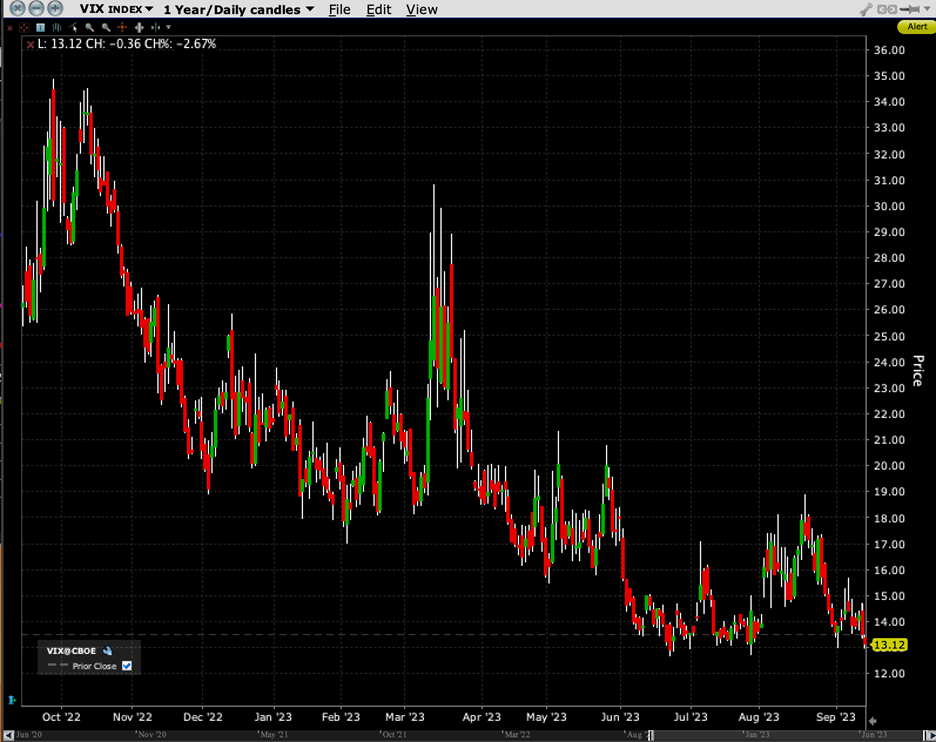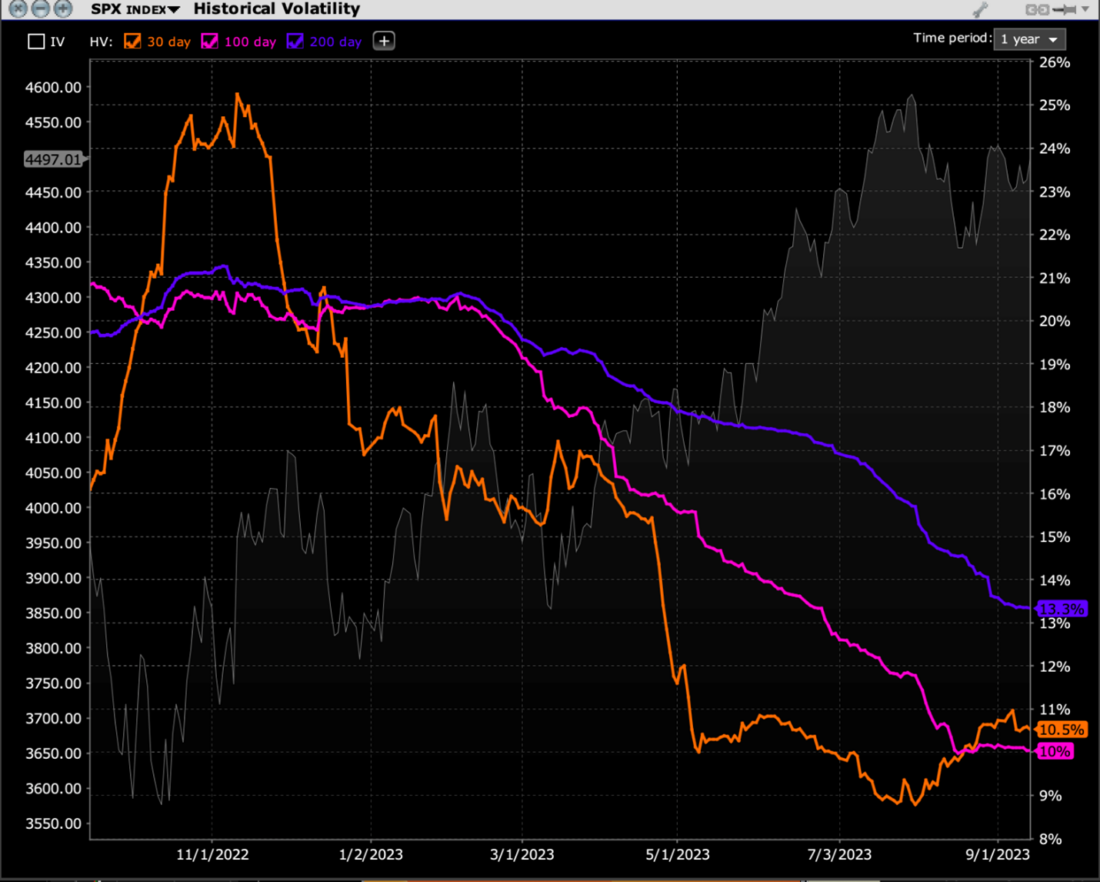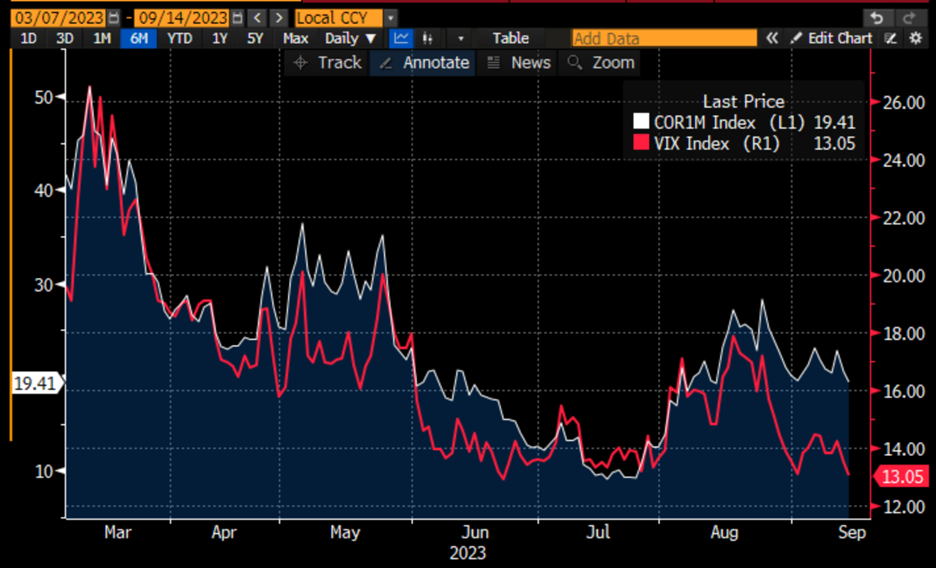Oh, BTW, Tomorrow Is A “Triple-Witching” Expiration
Am I nostalgic for the days when monthly and especially quarterly expirations were almost certain to bring volatility? Not always, but when volatility measures continue to imply complacent, if not somnolent markets, the nostalgia for a bit of market zaniness returns.
To be fair, volatility around major expirations has been generally declining over time. Quite frankly, the industry got better handling the specific risks and mechanics that accompany expirations. Part of that came with the passage of time – things tend to get easier the more you do them – and some of that can be attributed to the fact that expiration cycles have been continually shrinking for various important products. We’re referring to the weekly expirations that affect several hundred equities and the like, and now the daily expirations occur for a handful of key ETFs and indices.
Even if volatile quarterly expirations seem to be a thing of the past, we’ve had a few wild ones in recent years. Remember, the March 2020 low was the day after a wild quarterly expiration, and June 2021 was a notably wild one.FOMC decisions often occur during expiration weeks (not this month’s, of course), which can also raise the stakes for a busy week. But the combination of a low volatility environment and a lack of specific concerns about expirations, in general, have led us to the modest movements that we have seen leading up to tomorrow’s “triple-witching” day.
Over recent months, many measures of historical volatility for the S&P 500 (SPX) have been declining steadily. Considering that it is typical for traders to use historical volatility as a starting point for their implied volatility calculations (this article, from a wildly different volatility regime, explains that process), it is understandable why measures that utilize implied volatilities as the basis of their calculations would be declining as well. The most prominent of those is of course the Cboe Volatility Index (VIX), which is flirting once again with year lows:
VIX, 1-Year Daily Candles
(Click on image to enlarge)

Source: Interactive Brokers
Historical volatilities can measure different timeframes; 10-days, 100-days, etc.In the case of this year’s declines, the longer the timeframe, the more obvious the trend. But we have started to see some of those measures ceasing their declines, if not bottoming out recently:
1-Year SPX Historical Volatilities, Right Scale: 30-Day (orange, ), 100-day (magenta), 200-day (blue); with SPX level (faint grey, left scale)
(Click on image to enlarge)

Source: Interactive Brokers
In a recent article, we noted that the level of VIX may also be related to the level of correlation that is present in the overall marketplace.We used the CBOE 1-Month Implied Correlation Index (COR1M) as a basis for comparison, and while that index also remains at historically depressed levels, unlike VIX, it is noticeably above its recent lows:
6-Months, COR1D (white, left scale), VIX (magenta, right scale)
(Click on image to enlarge)

Source: Bloomberg
We recently raised the idea about how much of the current lack of volatility is complacency vs. correlation, and I can’t help feeling that the former is taking precedence. A story in the financial media today, about the launch of QQQY, an ETF that sells one-day or shorter (aka 0DTE) options on QQQ shows just how comfortable ordinary investors have become towards selling volatility. Don’t get me wrong – I fully understand the logic of writing options that capture their most precipitous decay, but the idea that this is becoming a mainstream strategy has me concerned. QQQY will be followed by similar ETFs shorting SPY and IWM options, and these will join the more than a dozen other options-income ETFs that have been launched in the past year.
Warren Buffet’s famous adage informs us that we’re supposed to be greedy when others are fearful, and fearful when others are greedy. It’s not clear that people are exceptionally greedy when they sell volatility with abandon, but they’re most definitively not being fearful. That lack of fear indeed makes me fearful. And by the way, quarterly and monthly expirations still matter, even if their relative importance has diminished.
More By This Author:
CPI Was A Yawn, What About Oil?
Complacency Or Correlation?
More About Correlation And VIX
Disclosure: ETFs
Any discussion or mention of an ETF is not to be construed as recommendation, promotion or solicitation. All investors should review and consider associated investment ...
more


